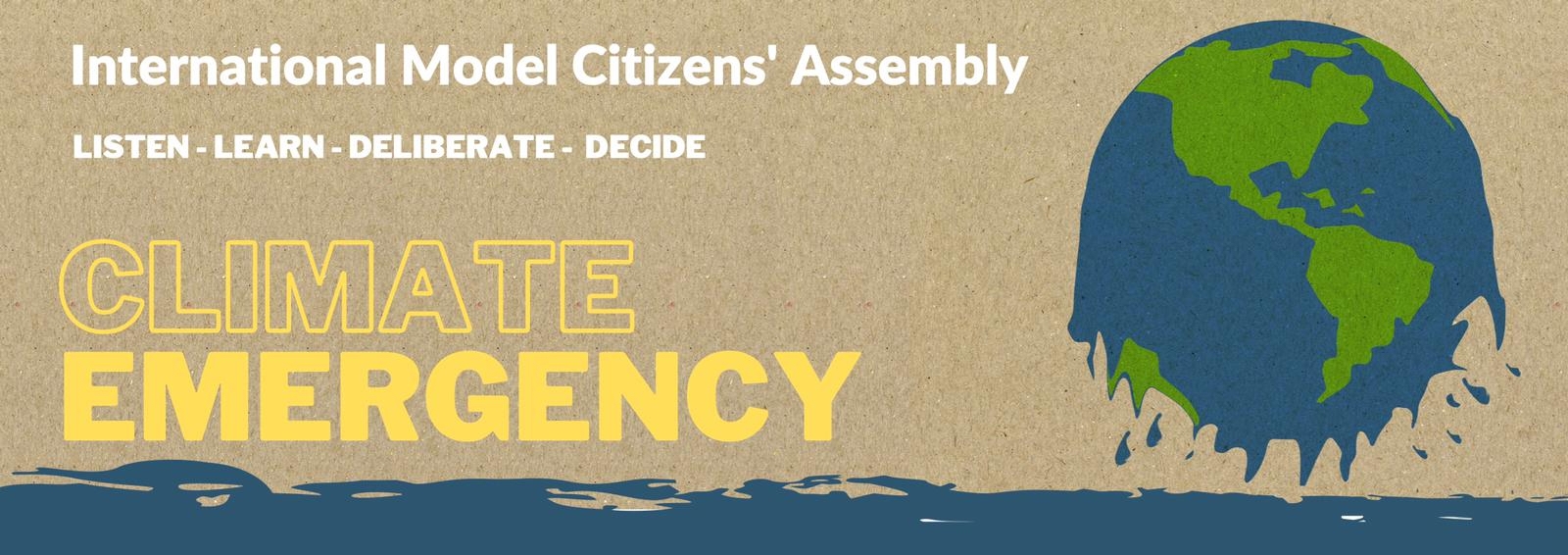

Historic Background
Ever since the release of Al Gore’s film, Inconvenient Truth, in 2006, there has been pretty much universal acceptance that Climate Change is happening and – inconveniently – it is likely to make life on earth all but impossible by the end of this century. The point is made equally compellingly in hundreds of books – perhaps most compellingly by Mark Lynas in his book, Six Degrees (2008) – which shows how life becomes increasingly impossible with each degree of global warming. Scientists have set the limit for life on earth at two degrees of global warming. At the Paris Climate Change Summit, that target was reduced to 1.5 degrees by island states which risk disappearing under the ocean. Continuing current lifestyles and business practices would mean that we’d hit 4.5 degrees by the end of the Century. And, though the public are aware, and governments are making encouraging noises about Green New Deals and phasing out petrol-engined cars by 2040, many feel they are not moving nearly fast enough to ward off the crisis.
In an update of Six Degrees called Our Final Warning (2020), Lynas points out that, despite all the efforts of Environmentalists since Earth Day 50 years ago, Global Warming has continued its inexorable upward rise, as indicated by the most famous graph in climate science, the Keeling Curve:
Lynas argues:
- “All our solar panels, wind turbines, electric cars, lithium-ion batteries, LED light-bulbs, nuclear plants, biogas digesters, press conferences, declarations, pieces of paper; all our shouting and arguing, weeping and marching, reporting and ignoring, decrying and denying; all our speeches, movies, websites, lectures, books, celebrity interventions; all our announcements, carbon-neutral targets, moments of joy and despair… None of these have so much as made the slightest dent in the steepening upward slope of the Keeling Curve.”
That is why this Citizen’s Assembly is perhaps the most important one to do. The argument is no longer between those who support climate science – and those who deny it. That argument, though sadly not over (see below) is essentially won. The argument now is how fast we should move to deal with the emergency. The first question: “What do we have to do to stop it?” – allows for a general, wide-focussed discussion ranging over a wide variety of topics – from phasing out fossil fuels, to becoming vegetarian, reducing travel, adopting sustainable land use methods etc. etc. The Second question is much more specific. And Radical: “Should we make the production, sale and use of fossil fuels a criminal offence by 2030?” The question is inspired by a passage from the last chapter of Our Final Warning. Lynas writes:
- “We have to cease work right now on all power plant building sites constructing coal-, oil- or gas-fired plants. We also need to stop selling cars and trucks – anything with an internal combustion engine – straight away, as well as home boilers, aircraft and shipping, cement kilns, blast furnaces and other industrial infrastructure. All of it must be cancelled, whatever the implications for jobs and the economy. If we cannot, or will not, do this, we must be honest and let go of the 1.5 degree target….”
The question sets the tone for the Assembly. The Second question has a YES / NO answer – which is easier to manage and, like a sports event, a straight fight with a winner and a loser and thus, potentially, more appealing to audiences. The First question allows the Assembly to come up with more of an action plan which could be used a lobbying tool with local authorities etc. The first thing you must do is to frame your MCA question in a way that will have broad, intergenerational appeal in your community.
Because the Climate Emergency’s impact is likely to be so much greater on future generations than today’s older people, we urge you to train up and empower young witnesses for this MCA. On the first question, there are no “sides” – no arguments. It is a group of people – young and old – presenting, passionately, what they feel needs to be done, by when. On the second question, as in a Model UN, one group has to get inside the heads of industry lobbyists and politicians to argue why it is simply NOT POSSIBLE to deliver a rapid transition to a fossil-free world. It is a powerful, plausible case which humanity has internalised and followed for the last 50 years. “It’s impossible to change that fast…” say the politicians and economists. They may be right, but the counter-argument is supported by the science as countless books and reports – and the leadership of the UN itself – tell us.
Your decision on which question to go for should be dictated by which “Next Steps” you want to pursue. Discuss and decide this first, and then decide which question leads you, seamlessly, into those next steps.
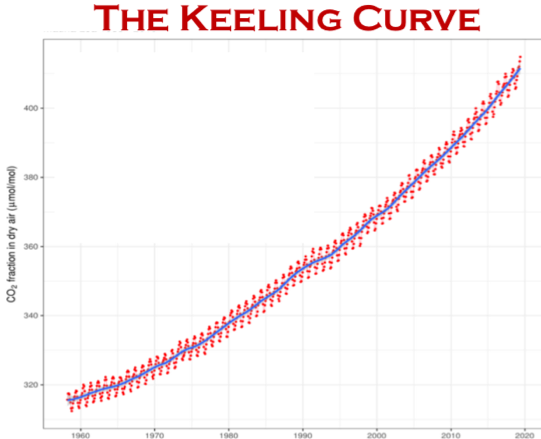
It is tempting to say that a short history of the Climate Emergency begins and ends with the Keeling Curve. It is the thermometer reading that shows our planet is sick – and getting sicker. It was born in a campsite in Big Sur, California where a young geochemist, Charles Keeling, tested out an instrument he’d made himself to measure the levels of Carbon Dioxide in the atmosphere. Keeling was ridiculously meticulous – measuring samples of the clear Pacific air every few hours. And his measure was very simple: carbon parts per million(PPM). For every million molecules of gas in the atmosphere, how many were carbon dioxide? In that first experiment in 1953, he found it was 310ppm. He found the level very similar in the forests of the Pacific Northwest, and the deserts of Arizona. The Scripps Institute of Oceanography put Keeling together with Henry Wexler who ran the U.S. Weather Bureau’s observation station on the Mauna Loa volcano in Hawaii – and together, starting in 1959, they measured the PPM of the planet every day for ever after. Intriguingly, they found PPM falling in spring and summer – as new foliage sucked more carbon out of the atmosphere – only to rise again in autumn and winter as the leaves fell: that gives the Keeling curve its zig-zag appearance as the planet breathes in and out with the seasons.
By 1967, a team led by Syukuro Manabe at the National Oceanic and Atmospheric Administration (NOAA) had extrapolated from the Keeling Curve the prediction that doubling the amount of carbon dioxide in the atmosphere increases global temperatures. Further, by examining tiny pockets of air trapped in polar ice sheets, scientists were able to measure PPM levels from hundreds, even thousands, of years ago. These showed that, though PPM levels had remained constant up to about the time of the industrial revolution, since then, they have rocketed upwards, showing the direct link between industrial activity, population growth and CO2 levels, a link confirmed by Michael Mann’s “hockey stick curve.”
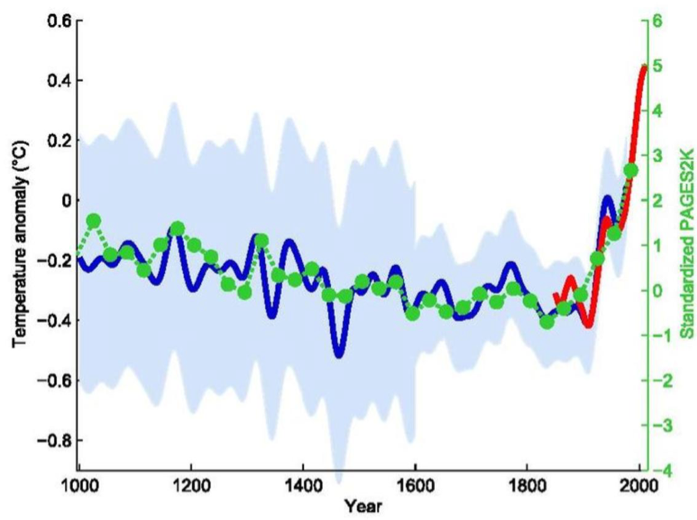
The summer of 1988 was the hottest since measurements began – and it saw widespread drought and wildfires within the United States. When NASA scientist, James Hansen, delivered testimony to congress that global warming was upon us in June 1988, the media and the public paid attention.
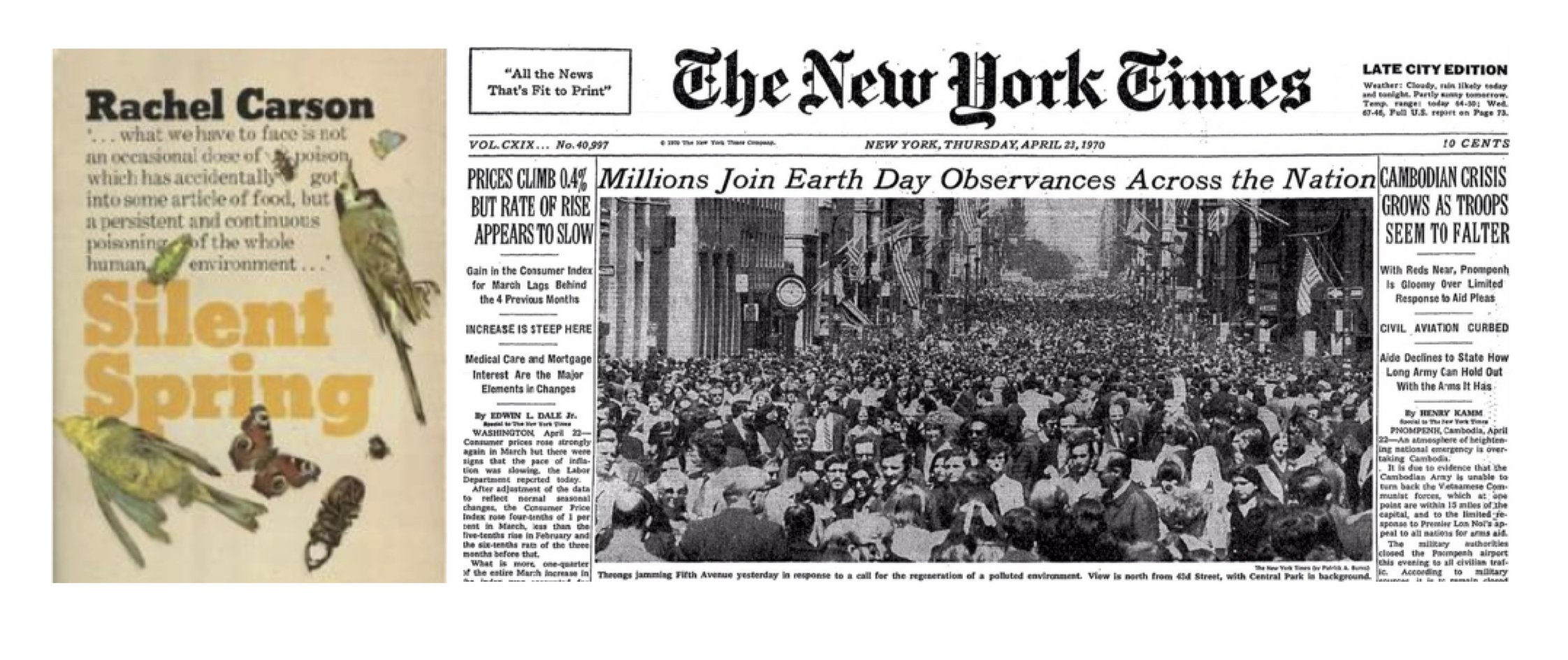
Indeed, ever since the publication of Rachel Carson’s landmark book, Silent Spring, in 1962 – there had been a small, but growing environmental movement around the world. Earth Day 1970 mobilised 20 million Americans in a movement that led directly to the establishment of the Environmental Protection Agency(EPA), the Clean Air Act, the Endangered Species Act and the Occupational Safety and Health Act, protecting millions from infections and thousands of species from extinction. Around the world, tens of thousands of environmental groups were springing up – and established organisations like Greenpeace and Friends of the Earth saw their membership numbers rocket upwards. This first wave of public interest peaked in 1992 when the first UN Earth Summit was held in Rio de Janeiro, Brazil: for two weeks, every broadcast news channel in the world led with stories of how humanity needed to do more to “save the environment.”
In 1989, the UN had established the Intergovernmental Panel on Climate Change (IPCC) which, ahead of Rio, drew up the Framework Convention on Climate Change (UNFCCC) with the goal of “stabilizing greenhouse gas concentrations at a level that prevents human-induced interference with the climate system within a time-frame sufficient to ensure that food production is not threatened and to enable economic development to proceed in a sustainable manner.”
This led directly to the Kyoto Protocol in 1997 which called on UN member states to reduce their emissions of 6 x greenhouse gases to 5.2 percent below 1990 levels by 2012. [Carbon dioxide (CO2) is the main greenhouse gas but Kyoto identified five other gasses: methane (CH4), nitrous oxide (N2O), hydrofluorocarbons (HFCs), perfluorocarbons (PFCs), sulphur hexafluoride (SF6), and nitrogen triflouride (NF3) that are equally damaging to the climate.] BUT – the protocol was only signed by industrialised countries, not less economically developed countries. This was why, though US president Bill Clinton signed Kyoto, President Bush called it “fatally flawed” and withdrew the US from it, saying that it would hurt the U.S. economy. And perhaps it was fatally flawed, for though 197 Nation States have now signed up to the UNFCCC, and though signatory nations have met every year at Conferences of the Parties(COPs) since 1994, the Keeling Curve and global temperatures have climbed steadily upwards.
Not that public interest in the issue had weakened: Clinton’s Vice President, Al Gore, who’d written compellingly, in Earth in the Balance, of the need for a Global Marshall Plan to deal with the planet’s ecological predicament, went on, in 2006, to make An Inconvenient Truth – which became a landmark witness to the fact of the climate emergency, winning Gore an Oscar and a Nobel Prize. Tens of thousands of NGO activists and pressure-groups braved the arctic cold of Copenhagen in December 2009 to pile pressure on government delegates to reach a binding deal on Climate Change. The build-up to this 15th COP involved more money, more celebrities, more scientists and more media pressure than any before it. And yet – it was universally agreed to be a failure. Mark Lynas, who was advising a small island state delegation, witnessed how the Chinese delegation wrecked the deal which almost every other UN member state was ready to sign.

The ‘Catastrophe in Copenhagen’ was a massive blow to environmental NGOs. It took a long time for many of them to recover and lobby the UN’s next big conference: Rio+20 which famously promoted the idea of a Green Economy, an idea developed at the UN Environment Programme. The idea of Sustainable Development Goals (SDGs) to replace the remarkably successful MDGs (Millennium Development Goals) was also born there. So – though the conference itself was possibly even more frustrating than Copenhagen, it prepared the ground for the UN’s most successful year of the 21st Century: 2015.
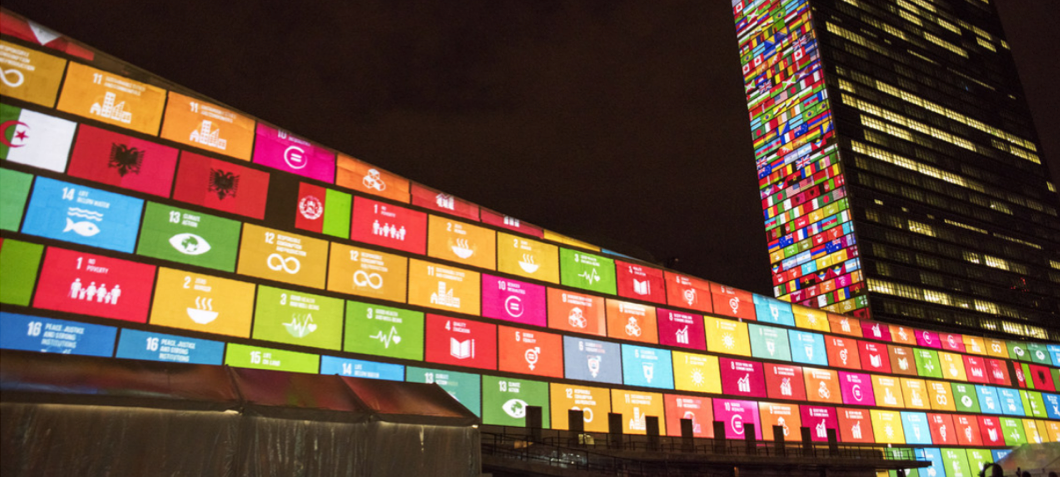
The two big successes of 2015 were the September agreement by the UN General Assembly on the 17 Sustainable Development Goals (SDGs) and the December agreement at COP 21 in Paris where 196 governments signed up to the UN’s first legally binding international treaty on climate change. This was the result of remarkable leadership within the United Nations involving a decision NOT to impose a top-down set of climate change targets. Rather, each nation was invited to come up with their own Nationally Determined Contributions (NDCs) – to the overall goal. The Paris formula realised that the initial NDCs would not be sufficiently ambitious, but set in place a procedure for ratcheting up the NDCs every five years so that the target – set at 2 degrees of global warming, but with the ambition to keep it below 1.5 degrees – would be met by mid-century. The NDCs submitted at Paris would result in 3.2 degrees of global warming – more than double the 1.5 degree target: everyone knew that. But it was a start!

That is why public action and pressure remains so important – and, across the world, it has increased and intensified. In 2015, a UN survey – Myworld2015 – found that Action on Climate Change came bottom in public assessment of global priorities.
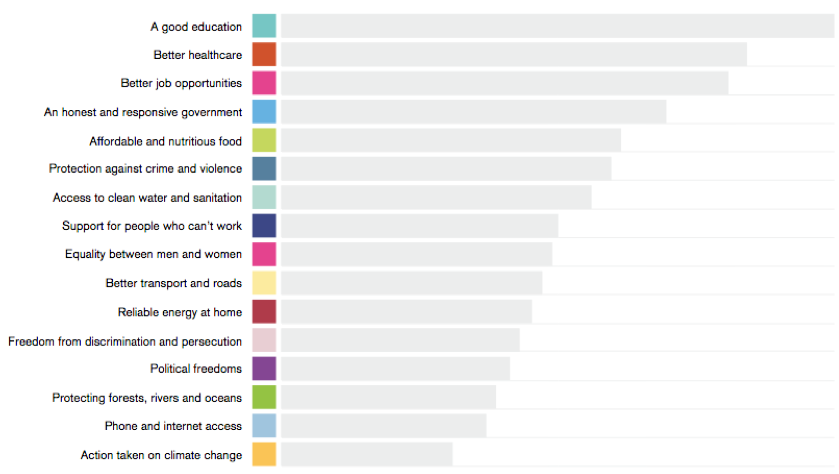
By 2019, Pew Research found that, in half the countries it surveyed, climate change was perceived to be the top threat. Part of that change is due to global movements like Extinction Rebellion – which mobilised millions of people to occupy city centres arguing for governments to “Tell the Truth” about climate change. Equally significant is the Swedish teenager, Greta Thunberg, who in August 2018 protested in front of the Swedish Parliament with a sign stating: “School Strike for Climate.” By November 2018, over 17,000 students in 24 countries had joined her monthly Fridays for the Future climate strikes. On 15 March 2019, over a million went on strike – rising to 4 million on 20 September. To avoid flying, she sailed to New York in a small boat to speak at the UN Climate Summit: her 4-minute speech is widely seen as the “Gettysburg address of climate oratory.” Thunberg became the youngest ever Time Person of the Year in 2019 and was nominated for a Nobel Prize.
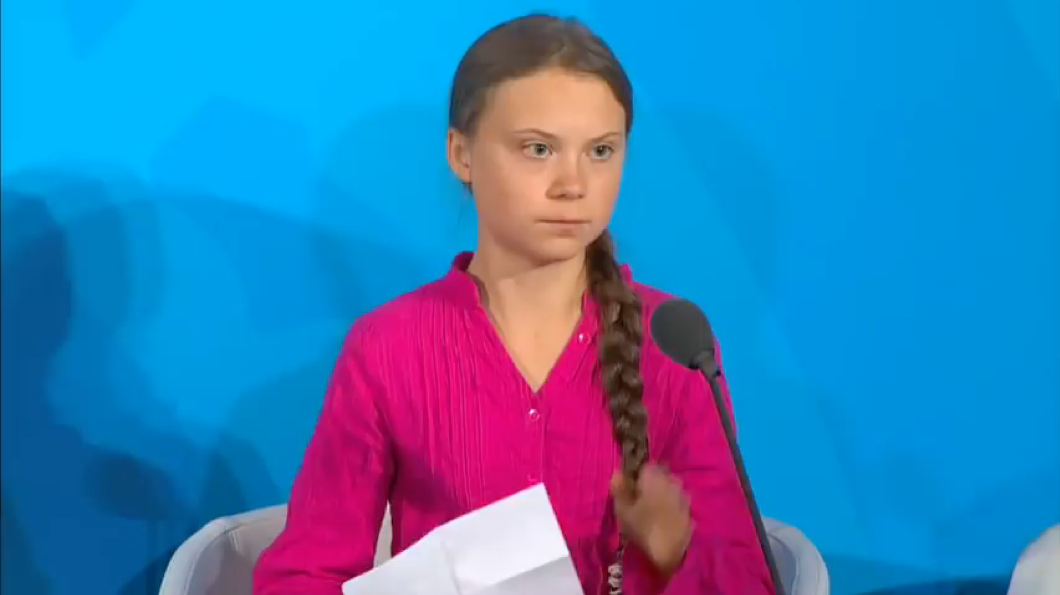
Books, films and media programmes have proliferated into a colossal global industry: thousands of books and films have been produced, and pressure groups created, to trumpet the dangers of Climate Change and promote solutions to it. The focus has gradually moved away from the dangers – highlighted by Mark Lynas’s Six Degrees – towards Green Economy solutions and the idea of a Green New Deal, initiated by the Sunrise movement in the USA and now championed by politicians like Alexandria Ocasio-Cortez in the USA is a major plank of incoming US President Joe Biden’s policy agenda. In the EU, Commission President, Ursula van der Leyen, is promoting a Green New Deal plan to spend €1 trillion to create a zero carbon Europe by 2050. China has promised to become zero carbon by 2060.
But is it enough: many climate / eco-groups in Europe and around the world fear it is “too little – too late.” That is why they are campaigning to bring the transition to a 100% green economy forward to 2030 – 2025 in some Extinction Rebellion documents. The scientific consensus is made clear in every UNFCCC report, and other peer-reviewed journals. The current UN Secretary General states in speech after speech, that “Governments around the world should declare a state of climate emergency until the world has reached net zero CO2 emissions…” And yet, even in this year of COVID, the Keeling Curve continues to creep upwards. CO2 rose by more than 50% between 2000 and 2010 – and keeps rising.

There remains significant opposition to Green New Deals – and to the idea that Climate Change is even happening. Climate change deniers have powerful supporters: From 1997 to 2017, the Koch family foundations spent $127 million on close to 100 organizations who hired experts to undermine climate science. Exxon Mobil and the American Petroleum Institute created the Global Climate Coalition – a large coalition of businesses which worked to undermine climate science, and prevent legislation curbing carbon emissions. These groups made the US Republican Party into a climate denying party. But it wasn’t just in the USA: in the UK, former British Chancellor of the Exchequer, Nigel Lawson, set up the Global Warming Policy Foundation which argues that “Global warming orthodoxy is not merely irrational. It is wicked….” – and that “asking the hundreds of millions of people in dire poverty to abandon the cheapest available sources of energy is asking them to delay the conquest of malnutrition and to increase the numbers of premature deaths.”
Even today, as climate change is acknowledged by almost all world leaders as a critical threat, Climate Denial continues and becomes more aggressive. The US Republican Party chose Donald Trump as its candidate in 2016 partly because he believed that Climate Change was a “Chinese Hoax.” As candidate, Trump campaigned on a slogan of “I dig coal!” ( – even though economics, not politics, are driving the decline in coal use in the USA,) As President, Trump pulled the USA out of the Paris Climate Change agreement.
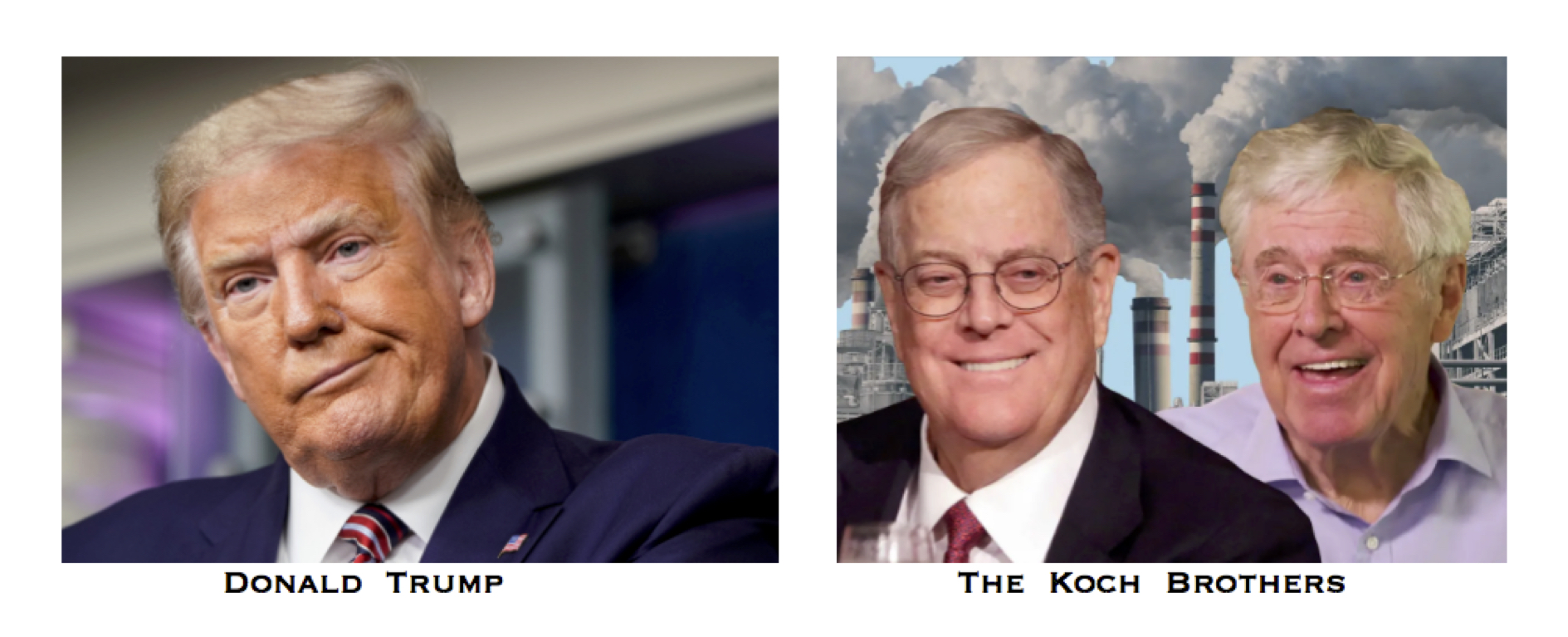
Denial continues outside of the USA: in 2019, Bjørn Lomborg, a Danish climate skeptic, published False Alarm: How Climate Change Panic Costs Us Trillions, Hurts the Poor, and Fails to Fix the Planet. In 2020, CLINTEL, a research group based in the Netherlands, got 500 scientists to sign their European Climate Declaration which argues that “There is no climate emergency…” and that current climate policies “ignore the fact that enriching the atmosphere with CO2 is beneficial.” Climate Deniers were also helped by Planet of the Humans – a movie produced by Michael Moore which shows that many of the green technologies promoted by environmental activists did not work.
Trump is now defeated, and COP 26 in Glasgow, Scotland in November 2021 may be the moment when climate deniers are finally silenced. It is not worth running a Citizen Assembly about whether or not Climate Change is happening because, right now, pure science and the vast majority of political leaders agree that it is. 30,000 delegates will arrive in Glasgow determined to get UN Member governments to –
- improve their NDC commitments,
- contribute to the UN’s $100 billion dollar climate mitigation fund,
- strengthen the provisions of the clauses relating to loss and damage from climate change – and –
- recommit to the main aim of the Paris Agreement: to keep global average temperature rise well below 2 degrees Celsius above pre-industrial levels – if possible, to 1.5 degrees Celsius.
Expect the summit to focus on the good news – not the terrifying stories of a dystopian future: the Climate Change debate has moved beyond that, just as, rightly or wrongly, the Climate Deniers will be ignored! We have the technologies; we have the momentum; we need the legislation to force humanity away from the destructive effects of fossil fuels, meat-eating and their other unsustainable behaviours. Your Model Citizen’s Assembly should choose a topic that challenges your community to think, creatively, – out of the box – about the future: about a low-carbon, prosperous future with green jobs and sustainable contentedness for all.
Global Optimism has called the next ten years: ‘the most consequential decade in human history.’ Future generations require that, during it, we make the correct, informed decisions. Then Act upon them.
Background to the
Glasgow COP-26 Climate Summit
“What priorities must we lobby for at it?”
and
“HOW are we going to achieve any of them?”
Learn more about the MCA process here
UK Government Goals
The UK Government host of the Glasgow Summit has set itself the following goals to achieve –
-
Secure global net zero by mid-century by accelerating the phase-out of coal, switching to electric vehicles, curtailing deforestation and encouraging investment in renewables. [net zero is when the amount of greenhouse gas we put into the atmosphere (through farming, industry, burning coal, oil, gas, etc.) – equals the amount that we, and nature, take out through forests, oceans, capturing carbon through machinery etc.]
-
Adapt to protect and restore ecosystems and build the resilient infrastructure and agricultural systems we need to avoid the loss of homes and livelihoods.
-
Secure the $100bn climate finance fund promised at previous COPs, and work with International financial institutions to unleash the extra trillions needed to secure global net zero.
-
Accelerate collaboration between governments, businesses and civil society
UN Goals
The UN Agency responsible for resolving the Climate Emergency, the UNFCCC, slims this down to just one goal: to get their Member governments to “increase the ambition of their Nationally Determined Carbon(NDCs) reduction targets.” Because, currently, we’re failing: before the 2015 Paris Agreement, the world was on track to 3.5 degrees of global warming, 2 degrees shy of the 1.5 degree target agreed in Paris. After Paris with the NDC commitments, it dropped to 2.9 – better but not nearly enough. Though some, mostly European, governments have kept their promises, many – including some of the biggest polluters: Trump’s USA, Bolsonaro’s Brazil and Putin’s Russia – have not.
HOW? not WHAT?
The question for us citizens, therefore, is not just: “What promises do we want our governments to make in Glasgow?” but, perhaps more importantly, “How do we get them to keep those promises and actually achieve the goals they set themselves?” As Partha Dasgupta said in his recent Review: “Our world lacks the institutional arrangements to protect public goods such as the climate, the oceans or rainforests.”
In other words, we don’t have a UN system with sufficient teeth to bring rogue governments into line. And while we have governments who are careless and irresponsible about their children’s future, that situation is unlikely to change.
Is there anything we can do? Or are we doomed? Dasgupta is right: we do NOT have the institutional arrangements in place to force governments to implement the laws we need to ensure that we, the peoples, adopt the behaviours required to achieve Global Net Zero. It’s not looking good. However, we have to believe that a big majority of the human family do NOT want to commit suicide, so we have to find a way to grab the wheel. But HOW?? How can we change our government priorities? HOW can we change entrenched behaviours and aspirations to “consume, consume, consume” – to eat what we want, and fly off on as many foreign holidays as we want? What course of action stands the best chance of success? Which are merely hallucinations? Here are some of the thoughts we’ve been considering:
PRIORITIES
Our first IMCA touched on several policy ideas for the Glasgow COP-26 Summit and sought to prioritise them. It chose, as its top priority, the imperative of finally ending the scandal of the $4 to $6 trillion governments currently spend on subsidies to the Fossil Fuel industry. Other priorities included:
- Strengthening international enforcement mechanisms (modelled on the Montreal Protocol of 1987);
- Creating a Global Coalition for Forest & Biodiversity Protection;
- Creating a Global Carbon Pricing Alliance(with carbon taxes set at $50 a ton by 2025 rising to $100 a ton by 2030 each accompanied by appropriate Border Adjustment arrangements);
- Commit to environment and sustainability education in all schools from K thru’ twelfth grade;
- Incentivise, through tax & subsidy policies, the public to purchase zero carbon products and services;
- Open Science: invest collectively in, and freely share, global Science research into new sustainable energy technologies (like methane capture from melting permafrost);
- Make 2030 the new 2050 (bring forward all net zero Carbon Emission target deadlines to 2030)
Benign vs. Aggressive
Our Priority Actions can be divided into those that may be termed “Aggressive” – requiring a degree of force to be achieved and “Benign” – requiring a voluntary response only from those who are willing. The Montreal Protocol was Aggressive: it curbed the release of Chlorofluorocarbons to stop the growth of the hole in the Ozone layer by threatening sanctions on governments and companies that continued to use them. UN Member states have pretty much decided not to allow that to happen again – which is why everything the UN does now has moved from the Aggressive to the Benign(like the NDCs). It also explains why, after 30 years of trying, we have still not been able to stop the most obvious and shocking climate change driver. Our IMCA’s top priority: stopping government subsidies for fossil fuels.. Governments of poorer countries say that they need them in order to help low income farmers get their produce to market. But it’s not just poor countries: many OECD countries still do it: the Canadian government is building the Trans Mountain oil pipeline.
Yet our IMCA’s second Priority was: “Strengthening international enforcement mechanisms” and others like forcing governments to introduce Eco-Education, bring forward the 2050 targets to 2030, tax & subsidy policies to incentivise zero-carbon purchasing decisions + “Open Science” and free technology transfer…. All these require the UN, or we the peoples, to force governments to take action that will cost them money or votes.
Possible? Or Fantasy? Perhaps both: for though our June 6 IMCA is about separating what’s possible from what’s fantasy, we all have to accept scientific realities: though it’s hard to imagine the governments of Saudi Arabia, Venezuela, Russia or China rolling over and accepting a UN-generated legal diktat, if levels of global discomfort rise so high, there may come a point where they will want to. Already some governments’ existing national laws allow individuals to bring cases against climate change villains:
National enforcement Mechanisms
On Wednesday May 26, 2021, a district court in The Hague ruled that Royal Dutch Shell PLC is partially responsible for climate change and ordered the company to reduce its carbon emissions by 45% by 2030. This is in line with United Nations guidance aimed at preventing global temperatures rising more than 1.5 degrees Celsius above preindustrial levels. This first-of-its-kind ruling stemmed from a lawsuit brought by environmental groups and adds fresh pressure on oil-and-gas companies already facing heightened scrutiny from governments and investors. Lawyers and consultants said it could set a precedent in other Western jurisdictions, particularly in Europe, opening oil and companies in other polluting industries to new legal jeopardy over their carbon emissions.
Now let’s look at some of the benign ways to achieve the goals we need to achieve:
Coalitions of the Willing
This is the favoured approach of “The Good Guy Governments” ” – those that recognise the Climate Emergency and are determined to do something about it. Paul Ekins raised the idea of a Global Carbon Pricing Alliance at our IMCA – and it was one of the most popular priorities. It reflects the idea of the Carbon Dividends plan endorsed by 3,500 US Economists and 28 Nobel prize winners which suggests that:“A consistently rising carbon price will encourage technological innovation and accelerate the diffusion of carbon-efficient goods and services.” It goes further, suggesting that: “…a carbon tax offers the most cost-effective lever to reduce carbon emissions at the scale and speed necessary. A rising carbon tax will benefit the most vulnerable by ensuring they receive more in “carbon dividends” than they pay in increased energy prices.” The “border adjustment system” mentioned by both Paul Ekins and the Carbon Dividends Plan is a way for Good Guy Governments which introduce carbon pricing and taxing can impose tariffs on goods imported from countries which don’t to raise them the same price as their own, local products. In turn, the Carbon Dividends Plan suggests, this “ – will create an incentive for other nations to adopt similar carbon pricing.”
But – just as you can’t persuade turkeys to vote for Christmas – most of the time, you cannot get citizens in democracies to vote for increased taxes. Many of us will remember how President Macron’s attempt to get Carbon Taxes introduced in France failed because the Gilets Jaunes(Yellow Vest) protest forced him to back down. France 24 explained the protest thus: “The levy infuriated motorists in rural and suburban areas starved of public transport, where households are heavily reliant on their cars.” An equally famous example of how NOT to introduce carbon taxes can be drawn from the experience of the Australian Labour party, whose failure to get carbon taxes accepted by the Australian electorate led to their election defeat by the coal-toting Scott Robinson. At our IMCA, Nicolas Berghsman, from IDDRI suggested that such initiatives must be accompanied by wide public consultation and engagement.
Public Purchasing Decisions
Ravi Theja Muthu, the Indian expert witness at our IMCA, felt that governments had shown themselves incapable of rising to the seriousness of the challenge of Climate Change. He favored greater reliance on the general public and the private sector. He reminded us that no one told large companies or governments to introduce Fair Trade: it was a decision by millions of good-hearted citizens to stop paying middlemen and get money to primary producers. Now some of the biggest multi-nationals are producing Fair Trade products. Why? – because the public demands them. If the public show the same appetite for zero carbon products, companies will produce them. And though government incentives in the form of tax & subsidy would help, Fair Trade has worked without them.
Eco-Education
Education would seem to be a benign way of nurturing behaviours that would combat climate change – but 30-years on from Eco-Ed and the Rio Earth Summit – and after TWO Decades for Education for Sustainable Development(ESD) run by UNESCO, all of which called on Government Education Ministers to introduce universal ESD – the world is no closer to delivering universal Eco-education. A recent study sponsored by UNESCO in 2020 found that less than 1% of teachers have any training in how to teach it. Individual teachers in all disciplines have found ways to introduce their students to arguably the greatest challenge that awaits them in their lifetimes but – while governments and examination boards focus young people’s attention on “core subjects” and STEM – there is almost zero appetite to introduce the study of environment, climate change and sustainability issues into the assessed curriculum. It’s almost as though governments don’t want young people to worry their little heads about such things.
However, as the Schools Strike 4 Climate showed, the simplest and most benign of strikes can focus attention on this imperative of our time. If more students strike more regularly and vociferously for Climate Studies and Eco-Education, governments will almost certainly deliver it for them.
Divestment
Divestment – withdrawing your investments from any company that mines or sells fossil fuels – is another benign way to deliver results to mitigate the Climate Emergency. Many big environmental groups – from Greenpeace to 350.org – have promoted divestment and got major corporations, foundations, cities, universities and individuals to pull their investments from fossil fuel companies. The growth and impressive performance of Ethical Funds is evidence of the viability of this way to combat climate change. Though fossil fuel divestment only started in US university campuses in 2011, by 2015, it was already the fastest growing divestment movement in history. In April 2020, a total of 1,192 institutions and over 58,000 individuals representing $14 trillion in assets worldwide had begun or committed to divest from fossil fuels. It hasn’t closed them down – far from it! But it has made a considerable dent in the value of the $5 trillion dollar a year Fossil Fuel industry.
Protest
From Tahrir to Tianenmen Squares, from Myanmar to Minsk, outrageous situations get outraged people on to the streets. Many of these protests are peaceful and benign – but they are, inherently, aggressive and many benign protests end up being violent and aggressive for a variety of reasons, often police brutality. The challenge for climate activists is that, where a military coup as in Myanmar, or a stolen election as in Belarus, can trigger an immediate expression of outrage – the slow burn of climate change offers no such immediate trigger. However, there is no question that Extinction Rebellion, with its Red Rebels and take overs of key transport routes, combined with Greta Thunberg’s Schools Strike 4 Climate and the proliferation of books, campaigns and TV programmes – have raised the Climate issue to the top of the global agenda in the public mind. However – when a $5 trillion dollar industry backed up by big donors and a major political party like the US Republican Party, or authoritarian governments, there is very little that protesters can do. They raise awareness but, as the bitter experience of protestors in Belarus, Russia, Myanmar, Hong Kong or here in the UK with the Iraq War or BREXIT has shown – they rarely achieve the change they seek.
Open Science
This was brought up by our Russian Expert witness, Ivan Zassoursky, who is researching the possibility of capturing methane from melting permafrost in Siberia. Open Science means invest collectively in finding new sustainable energy technologies and then freely sharing the results without charging colossal fees or royalties for their use. When the planet is in so much danger, it is ridiculous that the best minds, and the best technologies, are prevented from being implemented in the places that most need them by patent or copyright laws and/or national restrictions on immigration or inward investment. A quick win, perhaps? Again, free technology transfers is something that UN meetings have talked about for decades: there have been some “wins” but quite a lot of brick wall failures too.
INSURANCE: Mitigation Fund, Loss & Damage
The question that almost every government wants to side-step is: “When Climate Change causes rising sea levels or forest fires or hurricanes that results in the destruction of trillions of dollars-worth of real estate, who’s going to pay?” Insurance companies were the first to say “NOT US!!” – so governments have been forced to step in: Superstorm Sandy cost the US tax-payer $70 billion in 2012 and many many other climate-related emergencies have cost tax-payers huge sums. At several COPs, governments have agreed to set up a Climate Mitigation Fund of $100 billion dollars. But very little of that has been paid to date. Equally, liability for Loss and Damage has been raised at several COPs and – though the Warsaw International Mechanism talks airily of “sharing Data” and “providing overviews of best practices, lessons learned…etc.” – all governments appear scared to death to even talk about legal liability for the costs of Loss and Damage caused by climate change. But – as those costs rise – some one is going to have to pay: and money and insurance may yet be the driver that delivers a solution to the climate emergency.
Personal Carbon Budgets
Here we enter what most would call the realm of fantasy: if we divide the total amount of carbon we can emit without triggering catastrophic global warming (about 565 Gigatons) – by the number of people on the planet (about 7.875 billion people) – we get a pretty accurate number for the Personal Carbon Budget of each individual member of the human family. Because the average citizen of an OECD country emits 100-200 times more carbon than one from a less-developed country, Personal Carbon Budgets would require a global trading system that would deliver the greatest global redistribution of wealth the world has ever seen. Which is why it’s never happened – and never likely to happen. Politicians dismiss it as “impractical” or a “totalitarian attempt to control behaviour.” But the fairness of it is indisputable – and where it has been piloted (usually amongst climate activists) – it has proved popular. It would unquestionably work – as the entire human family, and their governments, would be forced to buy into the scientific realities of climate change: if rich people wanted to fly their private jets, or drive big cars, they would have to purchase the carbon budgets of impoverished people in less-developed countries. And that would deliver the Carbon Dividends that would make the peoples of the Global South the big winners from the climate emergency. It has to happen – some day – some HOW!
The Peace Child solution: STRIKE
A Quote variously attributed to army generals, Isambard Kingdom Brunel and George Santanyana, says: “The impossible we do immediately; miracles take a little longer…” Looking down the tunnel of the next 100 years, tackling the Climate Change challenge appears to be completely impossible. Solving it will require a miracle. For the operation of twenty-first Century human civilisation requires the emission of huge amounts of carbon. Bill Gates, a relative newcomer to the Climate Change field, puts it thus:
“Virtually every activity in modern life – growing things, making things, getting around from place to place – involves releasing greenhouse gases, and as time goes on, more people will be living this modern lifestyle. That’s good because it means their lives are getting better. Yet if nothing else changes, the world will keep producing more greenhouse gases, climate change will keep getting worse, and the impact on humans will, in all likelihood, be catastrophic. That’s a pretty big if….”
“IF nothing else changes…” It’s not hyperbole to say that the survival of many – perhaps most – of our children and grand-children depends on achieving those changes. Some are beginning to happen – electric cars, wind & solar farms, vegetarianism… But at glacial pace. The BIG changes – criminalising the production and sale of fossil fuels, carbon pricing, personal carbon budgets, even universal Eco-education – are barely being talked about. So – we, in Peace Child International, start with children: if their survival is at stake, they need to figure out HOW to achieve these changes. And – as we have found in our 40 year history – they frequently have the best, most innovative ideas.
In 2008, ten years before Greta, a group of kids in Rochester, New York came up with a new version of the Peace Child play called: Kids on Strike. It told how young people around the world, recognising the perils faced by their generation from climate change and resource depletion, decide to go on strike until their teachers teach them exactly what’s happening – and their governments take the steps necessary to resolve the problems. Until then, they study the climate change issue at home and come up with their own solutions to suggest to governments. The strike goes global – and finally, the initiators of the strike are called to the UN Security Council where, eventually, solutions are thrashed out by government leaders and youth working in partnership. New versions of this story have been performed at the UN in Geneva, schools and communities around the world – and in a new professional version, called simply: STRIKE – which will be premiered in Autumn 2021 in Moscow.
The Theatre Stage is a place where miracles happen. But the original Peace Child fantasy, written in 1982, about ending the US-Soviet nuclear stand-off, became real in 1989 with the fall of the Berlin wall – and the almost immediate reduction in nuclear arsenals from 70,000 nuclear weapons, to less than 15,000. The current Peace Child challenge – for a new Peace Child story – is all about creating a compelling new Peace Child fantasy: one set in 2060, looking back to 2021, and telling what the children passing through schools today will do with their lives to bring about a safe, sustainable world – free from the threat of climate change – by the time they reach retirement age.
This series of Model Citizens’ Assemblies – on the Climate Emergency, on nuclear war and pandemic preparedness – are all about creating the building blocks and rationale for that new story. It challenges children, and their parents and grand-parents, to imagine how the miracles will happen that take us from the perilous place where we stand at the moment, to the safe sunlit uplands of sustainability where we all want to be. Please join us on this journey – and help us first imagine – then tell the story of how we create – that Future we all want.
International Model Citizens’ Assembly (IMCA)
Dreams vs the Art of the Possible
The purpose of any Citizens’ Assembly is to come up with ideas that experts and analysts haven’t thought of yet. So – we want YOUR suggestions for what YOU believe is realistic to lobby for in Glasgow? Whatever your age, educational attainment or background, if you’re reading this, you are an educated member of the human family: you have a right to demand that governments and international bodies conserve and protect a natural environment in which you and your descendants can live a safe, healthy life. There are no passengers on Planet Earth: we’re all drivers. Every decision we make, every Action we take, builds or diminishes that natural environment: Glasgow has focussed the world’s attention on the Climate Emergency. So – JOIN US on Sunday 6 June @ 19.00GMT to agree what we should be lobbying for. And let’s try to agree: what are the most effective lobbying tactics?